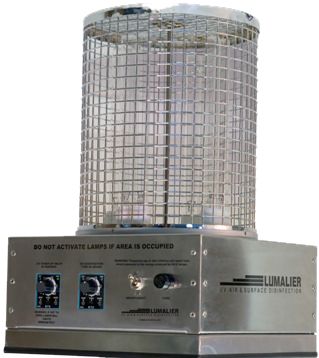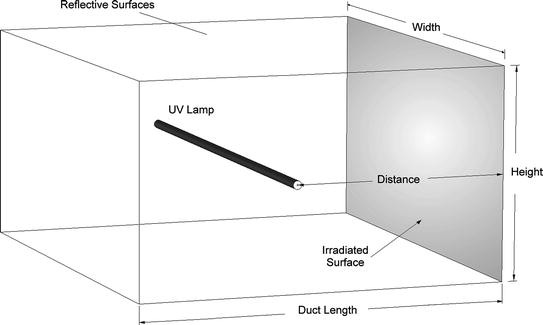Letting loose the Power of UV Surface Disinfection: Safeguarding Against Dangerous Pathogens
Letting loose the Power of UV Surface Disinfection: Safeguarding Against Dangerous Pathogens
Blog Article
UV Disinfection: The Cutting-Edge Technology Transforming Cleanliness Practices
In the world of cleanliness methods, one technology has emerged as a game-changer: UV disinfection. From medical care settings to food processing, UV sanitation is making its mark in different industries.
How UV Disinfection Functions
UV disinfection functions by using ultraviolet light to destroy or suspend bacteria, offering a very efficient and chemical-free method of cleanliness. This modern technology harnesses the power of short-wavelength UV-C light, which can damaging the DNA and RNA of bacteria, thus providing them incapable to cause and duplicate harm.
The process starts with the installment of UV sanitation systems, which contain UV lights that release UV-C light. These lights are tactically positioned in locations where microbial contamination is an issue, such as water treatment plants, hospitals, labs, and food handling centers.
When bacteria are subjected to UV-C light, the photons penetrate their cell walls and reach the DNA and RNA within. The high-energy UV-C photons disrupt the hereditary material by creating bonds between surrounding nucleotides, resulting in the formation of thymine dimers. These dimers protect against the bacteria from replicating, making them harmless.
UV disinfection is extremely efficient versus a vast variety of bacteria, consisting of bloodsuckers, viruses, and bacteria. It is particularly reliable versus waterborne microorganisms like E. coli, Giardia, and Cryptosporidium. In addition, UV sanitation is a chemical-free approach, getting rid of the need for possibly hazardous disinfectants and reducing the danger of dangerous sanitation byproducts.
Advantages of UV Disinfection
UV disinfection provides numerous benefits in the field of cleanliness, making it a highly liked approach for successfully getting rid of dangerous microbes. One of the essential benefits of UV sanitation is its capability to supply a chemical-free option. Unlike conventional disinfection techniques that count on chemicals, UV sanitation makes use of ultraviolet light to ruin the DNA of microorganisms, rendering them incapable to duplicate and create infections. This not only eliminates the need for potentially dangerous chemicals however additionally decreases the threat of chemical deposit on surfaces.

UV disinfection is additionally extremely versatile in its applications. It can be used in various setups, including healthcare facilities, schools, food handling centers, and water therapy plants. UV sanitation systems can be quickly incorporated into existing hygiene techniques, providing an additional layer of protection against infectious diseases.
In addition to its effectiveness and flexibility, UV disinfection is likewise eco-friendly. It does not create any kind of harmful byproducts or residues, making it a secure and sustainable method for cleanliness - uv surface disinfection. UV disinfection requires marginal upkeep and has a long lifespan, resulting in cost financial savings in the lengthy run.
UV Disinfection in Health Care Settings
In medical care setups, UV disinfection has arised as a revolutionary method for efficiently removing unsafe microorganisms. UV disinfection functions by giving off ultraviolet light at a specific wavelength that is lethal to germs, infections, and various other bacteria.
First of all, UV sanitation is a non-chemical method, making it an ecologically pleasant option contrasted to conventional sanitation methods that often entail using harsh chemicals. Making use of UV light removes the demand for chemical anti-bacterials, reducing the threat of harmful residue or chemical exposure to both clients and health care workers.
In addition, UV disinfection is very effective in eliminating a large range of bacteria, including drug-resistant microorganisms such as MRSA and C. difficile. It gives a consistent and reputable disinfection process, making sure that all surfaces and equipment are thoroughly decontaminated, visit homepage even in hard-to-reach areas.

UV Sanitation in Food Handling
The application of UV sanitation prolongs past medical care settings and discovers considerable worth in the world of food handling. uv surface disinfection. UV sanitation technology is ending up being progressively prominent in the food industry due to its capability to efficiently remove hazardous pathogens and boost food security
One of the main advantages of UV sanitation in food processing is its capacity to target a large range of microorganisms, including microorganisms, infections, and molds. By utilizing UV light at details wavelengths, it is feasible to interrupt the DNA and RNA of these microorganisms, rendering them unable to create or recreate harm. This innovation can be put on different phases of the food handling chain, consisting of surface area disinfection, equipment sanitation, and water therapy.
UV disinfection offers a non-thermal and chemical-free approach of sanitizing foodstuff. Unlike conventional sanitation methods that count on chemicals or warmth, UV innovation does not leave any type of residue or alter the preference, texture, or nutritional value of the food. This makes it a perfect option for markets that require strict adherence to top quality requirements.
Additionally, UV disinfection systems are simple to run and set up, needing very little upkeep. They can be integrated right into existing processing lines without creating considerable disruptions to the production procedure. Furthermore, UV systems have a quick therapy time, permitting for continual processing and decreasing downtime.
The Future of UV Disinfection

One area where UV disinfection is expected to make significant developments remains in the area of healthcare. With the rise of antibiotic-resistant germs and the need for more reliable disinfection approaches, UV light has the potential to play a critical duty in reducing healthcare-associated infections. UV sanitation systems can be used to sanitize surface areas, tools, and even the air in medical care facilities, assisting to avoid the spread of unsafe virus and boost person safety.
An additional sector that could profit from developments in UV disinfection technology is the food industry. UV light has already shown to be a reliable method for decontaminating foodstuff and lowering the threat of foodborne health problems. As innovation enhances, we can anticipate to see a lot more effective and cost-efficient UV disinfection systems you can look here being carried out in food handling plants, making sure that the food we take in is secure and devoid of damaging bacteria.
Final Thought
Finally, UV sanitation is an advanced modern technology that is changing hygiene methods in health care settings and food handling. By using UV light to kill or deactivate bacteria, it provides various advantages such as efficiency, performance, and safety. With continuous improvements in this area, UV disinfection holds excellent prospective for the future of sanitation, offering a sustainable and trustworthy option for preserving clean and sanitary settings.
UV disinfection is a chemical-free method, eliminating the requirement for potentially unsafe anti-bacterials and reducing the risk of harmful disinfection spin-offs.
Unlike traditional sanitation methods that rely on chemicals, UV sanitation uses ultraviolet light to destroy the DNA of bacteria, making them unable to duplicate and create infections. Unlike typical disinfection techniques that depend on chemicals or warmth, UV technology does not leave any kind of residue or alter the taste, structure, or dietary value of the food. click for more info As technology boosts, we can anticipate to see more economical and reliable UV sanitation systems being applied in food handling plants, guaranteeing that the food we take in is secure and free from unsafe germs.
In conclusion, UV sanitation is an advanced technology that is changing cleanliness methods in health care setups and food processing.
Report this page